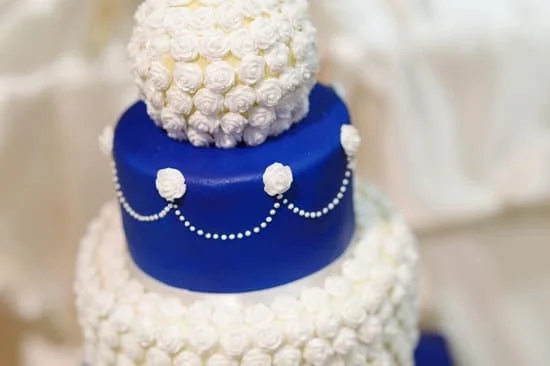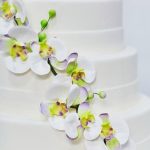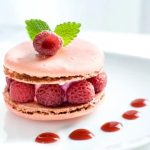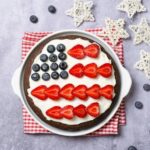Preparing a cake for decorating is a crucial step in the process of creating a beautiful and delicious masterpiece. Whether you are a beginner or an experienced baker, properly preparing your cake sets the foundation for a successful decorating experience. From choosing the right type of cake to mastering techniques like crumb coating and icing, each step plays a vital role in achieving a professional finish.
Before delving into the exciting world of cake decorating, it is important to understand why preparation is essential. A well-prepared cake not only ensures a smooth canvas for your artistic vision but also enhances the overall taste and texture of the final product. By following proper steps and techniques, you can elevate your cakes from ordinary to extraordinary, delighting both visually and palatably.
In this article, we will explore everything you need to know about preparing a cake for decorating. From selecting the perfect base to mastering different icing methods and adding decorative elements, we will guide you through each stage of the process. So get ready to unleash your creativity and learn how to transform a simple cake into a work of art that will impress both eyes and taste buds.
Choosing the Right Type of Cake for Decorating
When it comes to choosing the right type of cake for decorating, it is essential to consider both the flavor and texture of the cake. A dense and sturdy cake, such as a butter cake or a pound cake, is ideal for decorating with fondant or intricate designs that require structural support. On the other hand, a light and fluffy sponge cake works well with delicate icing techniques like buttercream flowers.
Before you start baking your cake, think about the design you have in mind and choose a flavor that complements it. For example, a rich chocolate cake pairs well with a decadent ganache frosting, while a vanilla chiffon cake can be beautifully adorned with fresh fruit and whipped cream. The key is to select a base flavor that will enhance the overall taste experience of the finished product.
In addition to considering the flavor profile of your cake, think about the occasion for which you are baking. For birthdays or celebrations, a funfetti cake with colorful sprinkles may be just what you need. For more formal events like weddings or anniversaries, a classic red velvet or carrot cake could be the perfect choice. By selecting the right type of cake for decorating, you set yourself up for success in creating a visually stunning and delicious masterpiece.
| Flavor Profile | Recommended Cake Type |
|---|---|
| Rich and Decadent | Chocolate Cake with Ganache Frosting |
| Light and Airy | Sponge Cake with Fresh Fruit and Whipped Cream |
| Celebratory Occasions | Funfetti Cake with Colorful Sprinkles |
| Formal Events | Red Velvet or Carrot Cake |
By paying attention to these factors when choosing the right type of cake for decorating, you can ensure that your creation not only looks beautiful but also tastes delicious. Experiment with different flavors and textures to find what works best for your design ideas and let your creativity shine through in every bite.
Baking the Cake
When it comes to preparing a cake for decorating, baking the cake itself is a crucial step that can greatly impact the final result. The texture and flavor of the cake will not only determine how well it holds up during decorating but also how delicious it tastes when served. To achieve the perfect cake for decorating, there are a few key tips to keep in mind.
First and foremost, it’s important to follow the recipe carefully and accurately measure out all ingredients. Even small deviations in measurements can affect the texture and flavor of the cake. Additionally, make sure all your ingredients are at room temperature before you start mixing them together. This helps ensure that everything combines smoothly and evenly, resulting in a uniform batter.
Another tip for achieving a beautifully textured and flavorful cake is to not overmix the batter. Overmixing can lead to a tough and dense cake rather than a light and fluffy one. Mix until just combined to avoid developing too much gluten, which can result in a tough crumb.
Finally, be sure to bake the cake at the correct temperature for the specified amount of time. Overbaking can dry out the cake, while underbaking can result in a gummy consistency. Following these tips will help you create a perfect canvas for decorating your cake with ease.
Leveling and Layering the Cake for a Professional Finish
Leveling and layering a cake is a crucial step in preparing it for decorating. This process not only ensures that your cake has a professional finish but also creates a sturdy base for adding layers of frosting or fondant. To achieve this, you will need to have the right tools such as a serrated knife, cake leveler, or cake slicer to create even layers.
Leveling the Cake
Before layering your cake, it is important to ensure that each layer is leveled. This can be done by using a serrated knife or cake leveler to carefully trim off the domed top of the cake. By doing so, you will create a flat surface that makes stacking and decorating much easier.
Layering the Cake
Once your cakes are leveled, it’s time to layer them with your chosen filling. Spread an even layer of frosting, ganache, fruit preserves, or any other filling between each layer. Make sure to stack them evenly on top of one another to avoid any leaning or sliding. Press gently down on each layer to secure them in place before moving on to the next step of crumb coating.
Preparing your cake by leveling and layering it properly sets the foundation for a beautifully decorated final product. Taking the time to ensure that each step is done accurately will result in a visually appealing and structurally sound cake that is ready for frosting, fondant, piping techniques, and decorative elements.
Following these tips will help you achieve a professional finish that will impress your friends and family at any special occasion. Remember: practice makes perfect when it comes to how to prepare a cake for decorating.
Crumb Coating the Cake to Ensure Smooth and Flawless Icing
One crucial step in preparing a cake for decorating is crumb coating. Crumb coating not only helps to achieve a smooth and flawless surface for icing but also ensures that any loose crumbs are sealed in, preventing them from ruining the final look of the cake.
To crumb coat a cake effectively, start by applying a thin layer of icing all over the cake to seal in the crumbs. This initial layer acts as a base for the final layer of icing, creating a clean canvas for decorations.
To crumb coat a cake properly, it is essential to use the right tools and techniques. A offset spatula is ideal for spreading the icing smoothly and evenly across the cake’s surface. Begin by applying a thin layer of icing on top of the cake and then along the sides.
Use sweeping motions with the spatula to spread the icing evenly, making sure to cover any gaps or imperfections. Once the entire cake is coated with a thin layer of icing, place it in the refrigerator for about 15-20 minutes to allow the crumb coat to set before adding another layer of icing.
In addition to creating a flawless base for decorating, crumb coating also helps to lock in moisture, keeping the cake fresh and delicious. By following this essential step in preparing a cake for decorating, you can ensure that your final creation looks professional and polished. Take your time during this process, as it sets the foundation for a beautifully decorated cake that will impress your guests or clients.
| Crumb Coating Tips | Professional Finish |
|---|---|
| Use an offset spatula | Ensures even distribution of icing |
| Refrigerate between layers | Allows each layer to set properly |
| Seals in moisture | Keeps cake fresh and flavorful |
Tools and Materials Needed for Cake Decorating
Baking Supplies
When preparing a cake for decorating, it is essential to have the right tools and materials on hand. Some basic baking supplies include mixing bowls, measuring cups and spoons, an electric mixer, a rubber spatula, cake pans, parchment paper, and a cooling rack. These items are crucial for ensuring that your cake bakes evenly and comes out of the oven with the perfect texture.
Icing and Frosting Tools
To achieve professional-looking results when decorating a cake, you will need various icing and frosting tools. Some essential tools include offset spatulas for spreading icing smoothly, piping bags and tips for intricate designs, a turntable for easy decorating, and a bench scraper for smoothing out icing layers. Investing in quality icing tools can make a significant difference in the appearance of your finished cake.
Decorative Materials
In addition to basic baking supplies and icing tools, you may also want to consider decorative materials to add flair to your cake design. Edible decorations such as sprinkles, edible glitter, and fondant accents can take your cake decorating skills to the next level.
Be sure to have these materials on hand before you begin decorating to ensure that you can execute your design flawlessly. By having all the necessary tools and materials ready before starting the decorating process, you can ensure that your cake turns out beautifully decorated and visually appealing.
Different Methods for Icing a Cake
Icing a cake is the final step in preparing a cake for decorating, and it can truly make or break the overall look and taste of your creation. There are several different methods for icing a cake, each with its unique characteristics and techniques. The most popular choices for icing cakes are buttercream and fondant, but there are also other options available to cater to different preferences and requirements.
One of the most common ways to ice a cake is by using buttercream, which is a smooth and creamy frosting that is easy to work with. It can be easily colored, flavored, and piped to create various designs on the cake. Here are some steps on how to prepare a cake for decorating using buttercream:
- Ensure your cake is completely cooled before applying the buttercream.
- Use an offset spatula to spread a thin layer of buttercream on the top and sides of the cake as a crumb coat.
- Chill the cake in the refrigerator for about 30 minutes to set the crumb coat before applying the final layer of buttercream.
Another popular choice for icing cakes is fondant, which is a thick, pliable icing that can be rolled out into sheets and draped over cakes for a smooth finish. Fondant gives cakes a polished look and allows for intricate decorations. Here’s how to prepare a cake for decorating using fondant:
- Dust your work surface with powdered sugar or cornstarch before rolling out the fondant.
- Roll out the fondant into a large circle slightly larger than the diameter of your cake.
- Lift the fondants carefully using a rolling pin or your hands and drape it over the chilled frosted cake, smoothing it gently over the top and sides using your hands.
In addition to buttercream and fondant, there are other icings such as royal icing, ganache, glaze, whipped cream, and more that can be used to decorate cakes based on personal preference and desired outcome. Experimenting with different icing techniques will not only enhance your decorating skills but also add variety to your creations.
Adding Decorative Elements
Decorating a cake is where you can truly let your creativity shine and turn a simple baked dessert into a work of art. One of the key elements in cake decorating is adding decorative elements such as piping techniques, edible decorations, and finishing touches. These components not only enhance the visual appeal of the cake but also give it a personalized touch that reflects your style and theme.
When it comes to piping techniques, there are various tools and tips that can help you achieve professional-looking designs on your cake. Different piping tips can create different shapes and patterns, from delicate swirls to intricate flowers. It’s essential to practice with different tips and consistencies of icing to master the art of piping. By controlling the pressure on the piping bag, you can create beautiful designs that will impress your guests.
In addition to piping techniques, using edible decorations can further elevate the appearance of your cake. From fresh fruits and flowers to edible pearls and gold leaf, there are countless options for adding texture and color to your creation. Edible decorations not only enhance the aesthetic appeal of the cake but also provide additional flavor and interest for those enjoying it.
Finally, don’t forget about finishing touches such as dusting with powdered sugar, adding sprinkles or colored sugars, or even painting designs on fondant-covered cakes for a unique touch. Experiment with different combinations to find what works best for your design vision.
Troubleshooting Common Issues
When it comes to cake decorating, it is not uncommon to encounter various challenges that may arise during the process. From cracks in the icing to bulges on the sides, these issues can affect the overall appearance of your beautifully decorated cake. Knowing how to troubleshoot common problems will help ensure that your final creation looks professional and polished.
One of the most common issues when decorating a cake is dealing with cracks in the icing. Cracks can occur due to various reasons, such as improper leveling of the cake layers, excess moisture in the icing, or fluctuations in temperature. To prevent cracks from forming, make sure to properly level and layer your cake before applying a crumb coat. Additionally, allow your cake layers to cool completely before frosting and avoid exposing them to sudden changes in temperature.
Another challenge that decorators often face is dealing with bulges on the sides of a cake. Bulges can occur when too much filling is used between layers or when the cake is not properly stacked and leveled.
To prevent bulges, make sure to use a minimal amount of filling between layers and gently press down on each layer as you stack them. If you notice bulging after stacking and crumb coating, use a bench scraper or offset spatula to gently push the bulge back into place before applying the final coat of icing.
In addition to cracks and bulging, other challenges may arise during the cake decorating process, such as air bubbles in fondant or buttercream that refuses to smooth out. Understanding how to troubleshoot these common issues will help you achieve a flawless finish on your decorated cakes. By following proper techniques and utilizing the right tools and materials, you can overcome these challenges and create stunning cakes that are sure to impress any crowd.
Conclusion
In conclusion, preparing a cake for decorating is an essential step that can make a significant difference in the final presentation and taste of your creation. By carefully selecting the right type of cake, baking it to perfection, leveling and layering it for a professional finish, and crumb coating it for flawless icing, you are setting yourself up for success in creating a beautifully decorated cake.
When it comes to choosing the right tools and materials for cake decorating, investing in quality equipment can make the process much smoother and more enjoyable. Whether you prefer using buttercream, fondant, or other icing methods, having the proper tools will help you achieve the desired results.
Lastly, once your cake is beautifully decorated, knowing how to store and display it properly is crucial to maintaining its appearance and taste. By following these tips for storing your cake in a cool, dry place away from direct sunlight, as well as displaying it on a stable surface away from heat sources or moisture, you can ensure that your hard work pays off in creating a stunning centerpiece for any celebration.
Mastering the art of preparing a cake for decorating takes practice and patience but with dedication and creativity, you can create show-stopping desserts that will impress any crowd.
Frequently Asked Questions
How Do You Prepare a Cake Before Decorating?
Before decorating a cake, it is important to ensure that the cake has completely cooled down. This helps prevent the frosting from melting or sliding off the cake. It is also recommended to level the top of the cake if needed and remove any excess crumbs.
Should I Refrigerate Cake Before Frosting?
Refrigerating a cake before frosting is not always necessary, but it can make the process easier. Chilling the cake can help firm up the layers, making them easier to work with and less prone to crumbling. However, remember to let the cake come back to room temperature before serving.
What Are the Steps in Cake Decoration?
The steps in cake decoration involve first choosing a frosting or icing for the cake. Once you have your desired frosting, apply a crumb coat to seal in any loose crumbs on the cake.
Then, proceed to frost your cake with an even layer of icing before adding any additional decorations such as piping, sprinkles, or edible flowers for a final touch.

Welcome to our cake decorating blog! My name is Destiny Flores, and I am the proud owner of a cake decorating business named Cake Karma. Our mission is to provide delicious, beautiful cakes for all occasions. We specialize in creating custom cakes that are tailored specifically to each customer’s individual needs and tastes.





